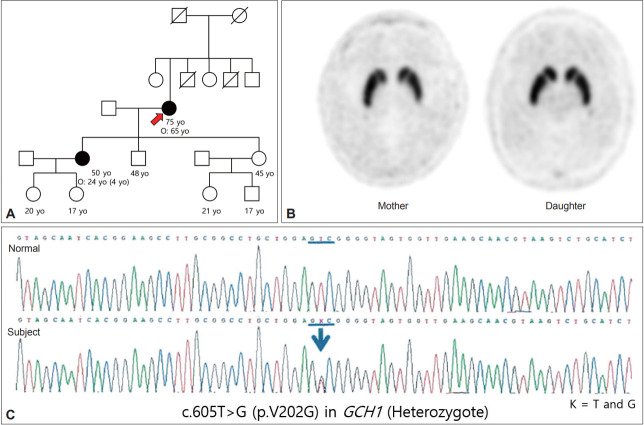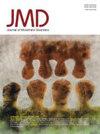A Novel Variant of GCH1 in Dopa-Responsive Dystonia With Oculogyric Crises and Intrafamilial Phenotypic Heterogeneity.
IF 2.5
4区 医学
Q2 CLINICAL NEUROLOGY
引用次数: 0
Abstract
Dopa-responsive dystonia (DRD) is a rare, treatable disorder caused by the dysfunction of enzymes involved in the biosynthesis of dopamine, leading to dopamine deficiency. 1 The most common form of DRD, also known as Segawa disease, is an autosomal dominant heterozygous variant in the guanosine triphosphate cyclohydrolase-1 ( GCH1 ) gene, resulting in a deficiency of tetra-hydrobiopterin (BH4), an essential cofactor for tyrosine hydroxylase (TH), which catalyzes the rate-limiting step of dopamine synthesis. The typical presentation of Segawa disease is child-hood-onset lower limb dystonia and diurnal fluctuation worsening toward the evening, with an excellent response to low doses of levodopa. However, phenotypic and genetic heterogeneity and sex-specific differences in penetrance frequently lead to misdiagnosis, which delays levodopa treatment and results in permanent orthopedic deformities requiring unnecessary surgical procedures. 2 Oculogyric crises (OGCs) are rare dystonic movement disorders characterized by paroxysmal, conjugate, tonic, and typically upward deviation of the eyes, lasting minutes to hours

一种新的GCH1变异体在伴有眼球震颤和家族内表型异质性的多巴反应性肌张力障碍中的表达。
本文章由计算机程序翻译,如有差异,请以英文原文为准。
求助全文
约1分钟内获得全文
求助全文
来源期刊

Journal of Movement Disorders
CLINICAL NEUROLOGY-
CiteScore
2.50
自引率
5.10%
发文量
49
审稿时长
12 weeks
 求助内容:
求助内容: 应助结果提醒方式:
应助结果提醒方式:


